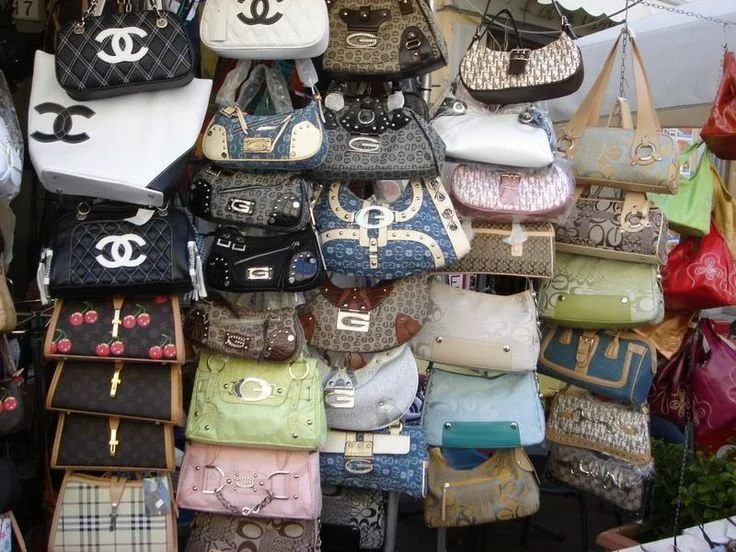Knockoffs vs. Counterfeit Goods: A Commentary on Consumer Behavior
We’re all familiar with counterfeit goods — they can be found almost anywhere, from flea markets and Canal Street in New York to online marketplaces like “the yellow app” (DHgate) and even some so-called “discount” stores in Atlanta.
Let’s set our feelings on counterfeit goods to the side for a moment. Knockoffs are different. Knockoffs are goods inspired by higher-end goods at a lower, more attainable price. Examples include purses at Walmart and Target that look like more expensive, recognizable brands, such as Bottega Veneta, YSL, Miu Miu, Prada, Chanel, Hermes, Staud, Longchamp, and even Coach.
Click on an image for comparison details:
These bags have an obviously similar look to the originals, but there are no fake brand labels, patterns, or logos. These are perfectly legal, and beloved by so many consumers. Many people do not see a problem with these bags, and to those uninterested in high fashion and just want to be cute, find them to be a perfect accessory.
The lines become blurry whenever we enter counterfeit territory. The only real difference between the two is simply the label. This is the difference between legal and illegal, consumers’ perception of right vs. wrong, and the ability for brands to sue.
Some of these bags are easier to tell than others; however, when they arrive in the mail, they look identical to the real things. The app/website has evaded legal trouble by blurring, covering, or even editing out small pieces of the logos, making them appear to be knock-offs when, really, they are counterfeit goods.
While buying these goods knowingly, in the U.S., is not a crime, trafficking these goods or selling them can land you up to 10 years in prison and a hefty $2,000,000 fine. Second offense punishments are even stricter, being up to $5,000,000 fines and possibly 20 years in prison. This is why it is safe to make Canal Street and DHGate hauls on TikTok.
I find it interesting that consumers are culturally okay with knockoffs but draw the line at counterfeit goods. Ultimately, many people passing by consumers carrying either of these style bags know no difference between a knockoff purse vs. a counterfeit purse. They may believe it was the brand label regardless. The design process is exactly the same as well. You are ripping off the initial design team’s work and selling it for less, which I think is worse than selling the brand label/logo completely. The corporation is not suffering, but it demeans the work that real people did within the brands.
This leads me to my final point, when making moral arguments and or comparing the two, it is important to recognize that they are two sides of the exact same coin.


















